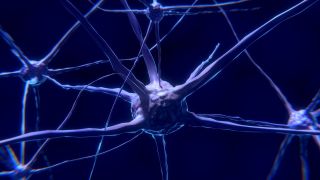Eating Disorders
Treating Binge Eating With Drugs Like Ozempic?
Are diabetes drugs like Ozempic acceptable treatment for binge eating disorder?
Updated August 18, 2023 Reviewed by Ray Parker
Key points
- Binge eating disorder is the most common eating disorder worldwide and can affect people of diverse weights.
- Studies show that the medication, Ozempic, can reduce binge eating in people with a high BMI.
- The safety/efficacy of Ozempic to reduce binge eating in people of diverse weights has not been tested.

Binge eating disorder (BED) is a disorder that includes recurrent episodes of binge eating for at least two days a week over the course of at least six months.1
A binge eating episode is defined as uncontrollably eating an atypically large amount of food in a discrete period of time (e.g., one hour). People with BED understand that their binge eating is atypical, but struggle to change these behaviors, which often leads to great distress for people with BED.1
BED is the most common eating disorder worldwide, with an estimated lifetime diagnosis of up to 1.8 percent for women, up to .7 percent for men, and up to 6.1 percent for adolescents.2 The high prevalence of BED is concerning because this disorder can negatively impact a person's health by contributing to physical (e.g., diabetes) and psychological (e.g., depression) ailments.2
Stigmatization of Binge Eating Disorder
Despite BED being a serious and pervasive medical condition, people with BED are highly stigmatized, with reasons for this stigmatization only recently becoming understood.3 A common misconception about BED is that everyone with this disorder has a high body mass index (BMI).7
This weight misconception is not necessarily why people with BED are stigmatized, though. Rather, recent research shows that people with BED are stigmatized more for their perceived eating habits (e.g., binge eating) and less for their weight.3
In their 2021 study, Hollett and Carter asked adults recruited through a social media advertisement to read one of six stories about Sarah, a fictional 19-year-old woman. In three of the stories, Sarah was diagnosed with BED. In the other three stories, Sarah was not diagnosed with BED.
Within each of these two conditions (with or without BED), there were three weight conditions. In the first condition, Sarah's weight was not disclosed. In the second condition, Sarah was described as being of a "recommended weight." In the third condition, Sarah was described as being "overweight."
Results from this study revealed that participants had more negative reactions towards Sarah (higher ARS score) when she was diagnosed with BED compared with when she was not diagnosed with BED, regardless of her weight.3 Similarly, participants rated Sarah as having more negative personality characteristics (higher CS score), such as weakness, when she was diagnosed with BED compared with when she was not diagnosed with BED, regardless of her weight.3
These results suggest that stigmas towards women with BED are attributed more to the woman's BED diagnosis and less to her weight.
Treatment for Binge Eating Disorder

The most common treatment for BED is cognitive behavioral therapy (CBT). Alternative treatments, including pharmaceutical drugs, however, are becoming more commonplace in BED treatment. For example, popular media sources (e.g., The New York Times) have recently reported that diabetes medications, like Ozempic, are being used to treat BED, as these medications have appetite-suppressing effects.11,12,13
The appropriateness of using diabetes medications, like Ozempic, to treat BED, however, is questionable. This is because the effectiveness of these medications for reducing BED symptoms has only been tested in individuals with a high BMI.8,9,10
Consequently, the effects of diabetes medications, like Ozempic, on the bodies of people with BED at diverse weights have not been extensively researched. This lack of research makes the safety and efficacy of these medications for people with BED at diverse weights unclear.
Moreover, because causes for BED are uncertain,4 we don't know which if any, hormones are imbalanced in people with BED. Consequently, we don't know how diabetes medications might impact the endocrine systems of people with BED at diverse weights.5,6
Ozempic and Glucagon-like Peptide 1 (GLP-1)
Ozempic is the brand name for a diabetes medication that contains the drug semaglutide. Semaglutide has been shown to suppress appetite and, therefore, contribute to weight loss in people with a high BMI.14,15 Consequently, medications containing semaglutide are now being used for weight loss and, in some cases, to treat BED.

One way semaglutide contributes to weight loss is by acting like one of the body's natural hormones, glucagon-like peptide 1 (GLP-1). GLP-1 participates in many functions that keep our bodies running optimally, such as insulin release, regulation of blood sugar levels, gastric emptying, and satiety.16
After we eat, the small intestine and parts of the brain (e.g., solitary tract nucleus and brainstem) release GLP-1.17 Once GLP-1 is released, this hormone activates receptors in the brain (GLP-1Rs) located on "satiety neurons" (proopiomelanocortin neurons; POMC). Activation of GLP-1Rs on these neurons makes us feel full and we eat less.18,19
Nonetheless, semgalutide and GLP-1 do not act identically in the brain. Unlike natural GLP-1,20 semaglutide cannot directly interact with most areas of the brain due to the brain's protective coating, the blood-brain barrier (BBB), which helps keep foreign chemicals out of the brain.21,22
Consequently, semaglutide indirectly interacts with brain regions behind the BBB (i.e., nucleus accumbens) by activating GLP-1Rs located on satiety neurons in the brain's circumventricular organs, which are located just outside of the BBB. When satiety neurons outside of the BBB are activated by semaglutide, these neurons send chemical messages throughout the brain that result in us feeling full.21,22
Are There Relationships Between Glucagon-like Peptide 1 and Binge Eating Disorder?

With the increasing use of Ozempic to treat BED, it is important to consider whether people with BED have naturally low levels of circulating GLP-1 like people with diabetes and/or people with high BMIs often do.23,24 For these individuals, semaglutide compensates for GLP-1 imbalances in their bodies.
Nonetheless, despite studies showing that semaglutide reduces binge eating behavior in people with a high BMI,8,9,10 people with BED do not have lower levels of circulating GLP-1 in the blood compared with people without BED of similar weights; this is true for when these individuals are both fasted and satiated.5,6 These results suggest that low levels of circulating GLP-1 in the blood do not drive binge eating behavior.
These possible differences in circulating levels of GLP-1 in the blood between people with BED and people with a high BMI and/or people with diabetes are concerning because clinical trials testing the safety and efficacy of semaglutide in BED treatment do not use people of diverse weights.
Conclusions
Despite emerging evidence that diabetes medications containing semaglutide can reduce BED symptoms (e.g., binge eating) in people with a high BMI, the safety and efficacy of these medications have not been tested in people with BED at diverse weights. This lack of research is concerning given our lack of understanding of the endocrine system's role in BED development.
More research is, therefore, needed to determine the long-term effects of semaglutide use on the bodies and brains of people with BED at diverse weights, as these individuals might respond differently to this drug compared with the majority of participants in semaglutide clinical trials.
References
1) Devlin, M.J., Goldfein, J.A., & Dobrow, I. (2003). What is this thing called BED? Current status of binge eating disorder nosology. The International Journal of Eating Disorders, 34, S2-S18.
2) Keski-Rahkonen, A. (2021). Epidemiology of binge eating disorder: Prevalence, course, comorbidity, and risk factors. Current Opinion in Psychiatry, 34, 525-531. https://doi.org/10.1097/YCO.0000000000000750.
3) Hollett, K.B., & Carter, J.C. (2021). Separating binge-eating disorder stigma and weight stigma: A vignette study. International Journal of Eating Disorders, 54, 755-763.
4) Fatima, T., Beigh, M., & Hussain, S.Z. (2018). Binge eating disorder: Causes, consequences, and management. International Journal of Unani and Integrative Medicine, 2, 20-23.
5) Yu, Y., Fernandez, I.D., Meng, Y., & Zhao, W. (2021). Gut hormones, adipokines, and pro- and anti-inflammatory cytokines/markers in loss of control eating: A scoping review. Appetite, 166. https://doi.org/10.1016/j.appet.2021.105442.
6) Geliebter, A., Hashim, S.A., & Gluck, M.E. (2008). Appetite-related gut peptides, ghrelin, PYY, and GLP-1 in obese women with and without binge eating disorder (BED). Physiology & Behavior, 94, 696-699. https://doi.org/10.1016/j.physbeh.2008.04.013.
7) Goldschmidt, A.B., Le Grange, D., Powers, P., Crow, S.J., Hill, L.L., Peterson, C.B.,...& Mitchell, J.E. (2011). Eating disorder symptomatology in normal-weight vs. obese individuals with binge eating disorder. Obesity, 19. doi: 10.1038/oby.2011.24.
8) Richards, J., Bang, N., Ratliff, E.L., Paszkowiiak, M.A., Khorgami, Z., Khalsa, S.S., & Simmons, W.K. (2023). Successful treatment of binge eating disorder with the GLP-1 agonist semaglutide: A retrospective cohort study. Obesity Pillars, 7. https://doi.org/10.1016/j.obpill.2023.100080.
9) Allison, K.C., Chao, A.M., Bruzas, M.B., McCuen-Wursts, C., Jones, E., McAllister, C.,...& Tronieri, J.S. (2022). A pilot randomized controlled trial of liraglutide 3.0 mg for binge eating disorder. Obesity Science & Practice, 9, 127-136. doi: 10.1002/osp4.619.
10) McElroy, S.L., Mori, N., Guerdjikova, A.I., & Keck, P.E. (2018). Would glucagon-like peptide-1 receptor agonists have efficacy in binge eating disorder and bulimia nervosa? A review of the current literature. Medical Hypotheses, 111, 90-93. doi: 10.1016/j.mehy.2017.12.029.
11) Troy, S., & Abbott, B. (2023). Weight-loss drugs like ozempic are treating binge eating, too. The Wall Street Journal. Retrieved from: https://www.wsj.com/articles/can-ozempic-treat-binge-eating-for-some-th….
12) Calucchia, C. (2023). Remi Bader shared how ozempic impacted her struggle with binge eating. Shape. Retrieved from: https://www.shape.com/remi-bader-ozempic-7094449.
13) Blum, D. (2023). People on drugs like ozempic say their food noise has disappeared. The New York Times. Retrieved from:https://www.nytimes.com/2023/06/21/well/eat/ozempic-food-noise.html.
14) Blundell, J., Finlayson, G., Axelsen, M., Flint, A., Gibbons, C., Kvist, T., & Hjerpsted, J.B. (2017). Effects of once-weekly semaglutide on appetite, energy intake, control of eating, food preference and body weight in subjects with obesity. Diabetes, Obesity, and Metabolism, 19, 1242-1251. doi: 10.1111/dom.12932.
15) Nicolau, J., Pujol, A., Tofé, S., Bonet, A., & Gil, A. (2022). Short term effects of semaglutide on emotional eating and other abnormal eating patterns among subjects living with obesity. Physiology & Behavior, 257. https://doi.org/10.1016/j.physbeh.2022.113967.
16) MacDonald, P.E., El-kholy, W., Riedel, M.J., Salapatek, A.M., Light, P.E., & Wheeler, M.B. (2002). The multiple actions of GLP-1 on the process of glucose-stimulated insulin secretion. Diabetes, 51, S434-S442.
17) Cabou, C., & Burcelin, R. (2011). GLP-1, the gut-brain, and brain-periphery axes. The Review of Diabetic Studies, 8, 418-431. doi: 10.1900/RDS.2011.8.418.
18) van Bloemendaal, L., IJzerman, R.G., ten Kulve, J.S., Barkhof, F., Konrad, R.J., Drent, M.L.,...& Diamant, M. (2014). GLP-1 receptor activation modulates appetite- and reward-related brain areas in humans. Obesity Studies, 63, 4186-4196. https://doi.org/10.2337/db14-0849.
19) Péterfi, Z., Szilvásy-Szabó, A., Farkas, E., Ruska, Y., Pyke, C., Knudsen, L.B., & Fekete, C. (2021). Glucagon-like peptide-1 regulates the proopiomelanocortin neurons of the arcuate nucleus both directly and indirectly via presynaptic action. Neuroendocrinology, 111, 986-997. doi: 10.1159/000512806.
20) Daniels, D., & Mietlicki-Baase, E.G. (2018). Glucagon-like peptide 1 in the brain: Where is it coming from, where is it going? Diabetes, 68, 15-17. https://doi.org/10.2337/dbi18-0045.
21) Gabery, S., Salinas, C.G., Paulsen, S.J., Ahnfelt-Rønne, J., Alanentalo, T., Baquero, A.F.,...& Knudsen, L.B. (2020). Semaglutide lowers body weight in rodents via distributed neural pathways. JCI Insight, 5. doi: 10.1172/jci.insight.133429.
22) Dong, M., Wen, S., & Zhou, L. (2022). The relationship between the blood-brain-barrier and the central effects of glucagon-like peptide-1 receptor agonists and sodium-glucose cotransporter-2 inhibitors. Diabetes, Metabolic Syndrome, and Obesity, 15, 2583-2597. doi: 10.2147/DMSO.S375559.
23) Ranganath, L.R., Beety, J.M., Morgan, L.M., Wright, J.W., Howland, R., & Marks, V. (1996). Attenuated GLP-1 secretion in obesity: Cause or consequence? Gut, 38, 916-919. doi: 10.1136/gut.38.6.916.
24) Nauck, M.A., Vardarli, I., Deacon, C.F., Holst, J.J., & Meier, J.J. (2010). Secretion of glucagon-like peptide-1 (GLP-1) in type 2 diabetes: What is up, what is down? Diabetologia, 54, 10-18.




